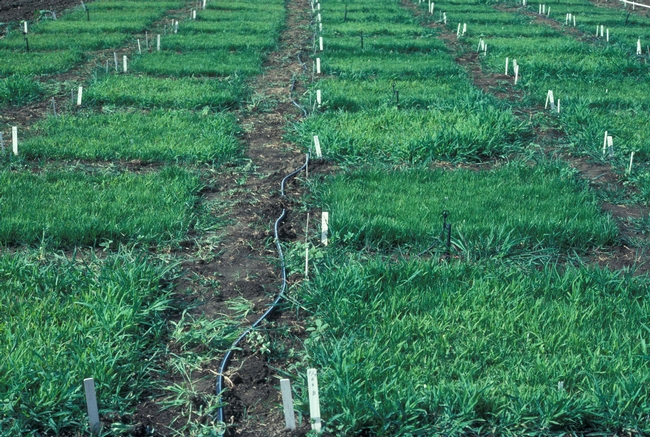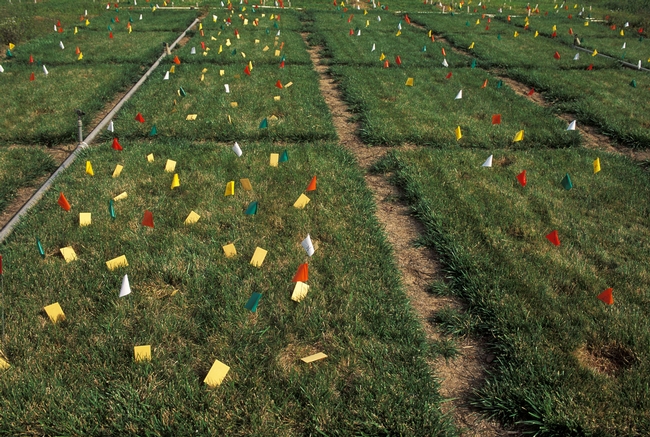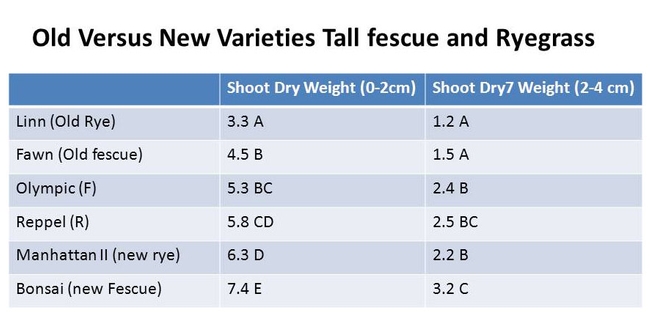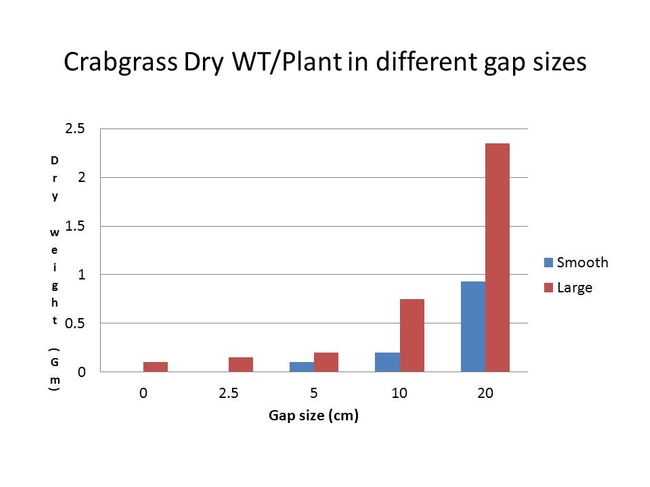We have all heard that turf grass is competitive to weeds and other plants in the landscape. There are several turf grass types grown in California. In southern California, Bermuda grass is the more common planting though Turf-type tall fesc ue is also used as well as other species to a lesser extent. Smooth and large crabgrass are the most prevalent summer annual grass weeds found in turfgrass in California. Can we devise systems using turf type, renovation (planting) time to establish a competitive, cool season, tall fescue turf and control crabgrass?
Several years ago with graduate student J. Graham Davis, and current farm advisor in Napa County, John Roncoroni, we developed experiments to study this concept. We chose different turf-type tall fescue varieties and planted them in the spring or fall at UC Davis and a university field station in Santa Clara, California. Secondly, we developed an established turf of medium vigor, tall fescue (variety Olympic) and evaluated the potential for large or smooth crabgrass establishing in different size “holes” or under three different management conditions (scalping the turf to thatch, clipping to 0.5 inches, planting and clipping again in 1 month, or removing the turf and placing clean soil in the holes.) Either smooth or large crabgrass seeds were planted in each treatment area. The turf areas were maintained to germinate and grow turf planted from seed.
Basically we found that tall fescue turfgrass planted in the fall of the year along with crabgrass at both sites established well with little or no competition from crabgrass. The older tall fescue varieties representing a more open growth habit (Linn variety) was less competitive than more vigorous tighter turf types (the improved turf-type fescues). As the fescue became more dwarf, they were less vigorous even though the culm count was high per surface area. More smooth crabgrass survived in these plots. There was more smooth crabgrass in the turf than when large crabgrass was planted in all varieties. Though there was more crabgrass establishing in the spring plantings, by the second season, crabgrass was not present in vigorous tall-fescue varieties. Smooth crabgrass was present in the open older varieties. Thus, fall planting of vigorous tall-fescue turf varieties controlled smooth and large crabgrass even if it was planted at the same time of planting the turf seed. It was less effective in spring plantings but by the second season with good management without herbicides, crabgrass was controlled.

Large crabgrass was most prevalent in large (10 cm and 20 cm) gaps. There was a significant difference in the number that germinated in the 5cm, 10 cm, and 20 cm gaps, but there was no significant difference in the number that germinated in the smaller gaps (

Take home story here is to plant and maintain a cool season turf that is vigorous. That is, a vigorous turf during the cool growing season, to maintain a vigorous turf and do not allow practices that might make “holes” in the turf to allow invasion of smooth or large crabgrass.

